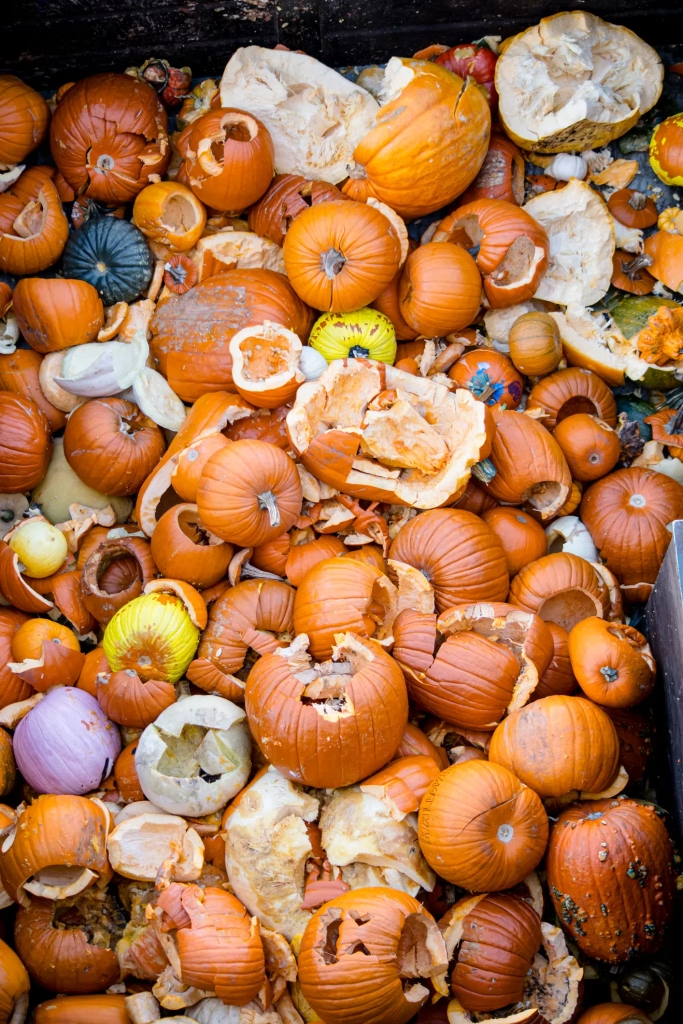Leaders in the UK’s circular economy are taking on the challenge of Halloween food waste. For Bio Capital, that means transforming pumpkins into renewable energy.
Halloween is big business in the UK. Brits spent £776 million on the occasion in 2024, and in 2023 that figure was over one billion.
But it’s a holiday that produces large quantities of waste. Alongside all the single-use costumes and props, Brits carve about 17 million pumpkins each year. About 80% of these go uneaten, meaning around 18,000 tonnes of extra food waste risks going straight to landfill.
This is the real horror story: Around 12,440 tonnes of CO2e produced by just one day, that’s the equivalent of almost 8,600 additional cars on the road for a year.
The fully circular solution to Halloween waste
We’re reminding families that there’s a better way: If you don’t eat your pumpkin, make sure the waste goes into your food caddy bin.
Councils up and down the UK take household food waste to facilities like ours, where it’s recycled.
This year’s pumpkins can become renewable gas and electricity that feeds straight into the local grid, providing heat and power for homes and businesses, or becomes compressed natural gas (CNG) to fuel green vehicles. The AD process also creates a high-quality biofertiliser that’s returned to the land to support sustainable farming and can even be used to grow next year’s pumpkin crop.
Halloween pumpkins transformed
It’s the circular economy in action. And it all happens via anaerobic digestion (AD), a process where food waste is broken down without oxygen.
Our specialist AD facilities in England, Scotland, and Northern Ireland process up to half a million tonnes of food waste every year. That saves around 345,000 tonnes of CO2 per year, about the same as around 240,000 less cars on the road annually. In 2024, we generated enough renewable power to supply around 100,000 UK households for a year.
If those 18,000 tonnes of uneaten pumpkins also reached us, we could produce enough renewable power for around 2,000 homes.
This huge opportunity can only be realised with support from local authorities and families across the UK. Let’s save those pumpkins from landfill, and give them new lives as part of a closed-loop response to climate change.
More about Bio Capital
The UK produces over 10 million tonnes of food waste every year. Only around 20% gets recycled.
70+ leading UK brands and local authorities trust us to transform their food waste into renewable energy. We are also working with the UK’s farmers to provide eco-friendly biofertilisers and compost.
It’s a circular process that helps achieve sustainability goals, drive the nation’s renewable energy transition, and protect our food production.
Bio Capital is the UK’s largest producer of renewable electricity and biomethane gas using food waste.
From kitchen to kilowatt, and back again.
